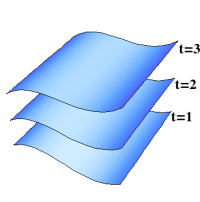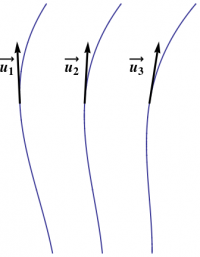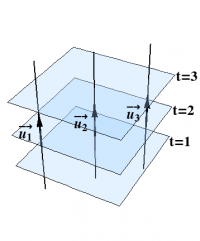- §1. Cosmology
- §2. Cosmological Principle
- §3. Constant Curvature
- §4. Robertson-Walker Metrics
- §5. The Big Bang
- §6. Friedmann Cosmologies
- §7. FRW Vacuum Models
- §8. Missing Matter
- §9. Standard Models
- §10. Cosmological Redshift
The Cosmological Principle
The simplest cosmological models are based on the principle that the universe is the same everywhere. This principle is sometimes referred to as the cosmological principle, and can be thought of as an extreme generalization of the Copernican view that the Earth is not the center of the universe.
More precisely, we assume that the universe is homogeneous and isotropic. Homogeneity is the assumption that there exists a foliation of spacetime into spacelike surfaces (“instants of cosmic time”), each of which possesses no privileged points. Isotropy is the assumption that there exists a foliation of spacetime into timelike curves (“cosmic observers”), each of which sees no privileged directions at any time.
More formally, a spacetime is (spatially) homogeneous if it can be foliated by spacelike hypersurfaces $\Sigma_t$, as illustrated in Figure 1, such that all points in a given surface $\Sigma_t$ are equivalent. Thus, there is no preferred point in $\Sigma_t$; physics is therefore the same everywhere at each instant of “time”. There is however no requirement that surfaces at different times also be the same.
Similarly, a spacetime is (spatially) isotropic at each point if there exists a family of observers $\uu_s$, as illustrated in Figure 2, such that all spatial directions (that is, all directions perpendicular to $\uu_s$) are the same. Thus, at every point, there is no preferred (spatial) direction.
The twin requirements of homogeneity and isotropy imply that the worldlines of the cosmic observers are orthogonal to the cosmic surfaces, as illustrated in Figure 3; if not, then the projection of $\uu_s$ into $\Sigma_t$ would be nonzero, and would define a preferred direction. Thus, “cosmic time” is precisely the time measured by such observers. This condition is often assumed separately, and is known as Weyl's postulate.


